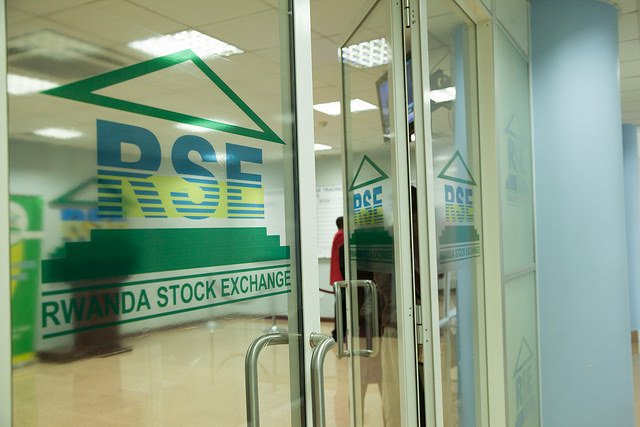Rwanda’s stock exchange positioned for liquidity transformation
Rwanda accelerates SOE listings to deepen BK.RW, CTL.RW, MTNR.RW liquidity as GDP grows 7.8%, CPI eases to 7.3%, and policy rate holds at 6.75%. With market-cap/GDP at 21% and reserves at 5.2 months, Kigali targets regional capital-market scale.

Rwanda’s decision to accelerate the listing of state-owned enterprises (SOEs) on the Rwanda Stock Exchange (RSE) represents a pivotal test of how fiscal prudence and capital-market development can converge in a small, well-managed economy. Despite steady macroeconomic performance, the market remains structurally shallow, with total capitalization around FRW 4.6 trillion (USD 3.1 billion), equal to roughly 21% of GDP.
Average daily turnover below USD 200,000 underscores limited liquidity, constraining institutional investors and corporate issuers seeking franc-denominated funding. Broader SOE participation—building on listed entities such as Bank of Kigali (BK.RW), Crystal Telecom (CTL.RW), and MTN Rwanda (MTNR.RW)—is central to transforming credibility into scale.
Strategically, additional SOE listings would address long-standing structural gaps. Increasing free float, still below 20% for most large counters, would compress bid-ask spreads, accelerate turnover velocity, and strengthen secondary-market depth. Publicly listed SOEs would also create sovereign-linked equity benchmarks usable as collateral for bond issuance, tightening credit spreads and lengthening maturities across the curve.
Transparent pricing of state assets would improve fiscal risk management, clarifying contingent liabilities while embedding corporate governance through shareholder oversight. Collectively, these changes would broaden the investor base, attract cross-border capital, and lower Rwanda’s weighted average cost of capital—conditions essential for sustainable fiscal consolidation.
Macro fundamentals provide a supportive backdrop. GDP grew 7.8% year on year in the first half of 2025, among the highest rates in Sub-Saharan Africa. Inflation eased to 7.3% in September from double-digit levels a year earlier, helped by supply-chain normalization and cautious monetary tightening. The National Bank of Rwanda maintains its policy rate at 6.75% after a 25-basis-point hike in August, ensuring real rates remain near neutral.
Reserves covering about 5.2 months of imports provide an external buffer consistent with exchange-rate stability. Public debt at 60–65% of GDP is manageable but requires diversification away from concessional and syndicated borrowing—making equity market expansion a critical complement to fiscal discipline.
Regional comparisons reinforce the potential scale. Kenya’s Nairobi Securities Exchange (NSEASI) maintains capitalization near 46% of GDP, supported by quasi-sovereign listings such as KENGEN and KCB Group, which anchor index liquidity and attract pension-fund allocations.
Tanzania’s Dar es Salaam Stock Exchange (DSEI), at roughly 25% of GDP, benefits from a broader utility and banking roster. Rwanda’s smaller base means even two to three major SOE listings with 20–30% free floats could raise capitalization by USD 1–1.2 billion within three years, lifting the market-cap-to-GDP ratio above 30% and doubling daily turnover by 2027. The reform would also unlock new asset classes—corporate, green, and sustainability-linked bonds—backed by publicly priced equity collateral.
The investor implications are significant. Deeper float and standardized disclosure would compress liquidity premia, allowing funds to rebalance positions efficiently. Cross-border investors—already active in Nairobi and Dar es Salaam—would gain scalable entry to Rwanda’s growth story without prohibitive transaction costs.
For banks and insurers, listed SOEs would provide collateral with observable marks-to-market, improving balance-sheet transparency. Private equity firms would benefit from viable public exit routes, shortening fund cycles and stimulating new capital commitments to Rwandan assets. These mechanisms together could lift the country’s investable profile within the East African Community (EAC), integrating Kigali’s exchange into regional portfolio flows.
Risks hinge on execution and governance. Transparent audits, clear dividend policies, and credible minority-shareholder protections are prerequisites for market confidence. Integration with EAC settlement systems and harmonized listing rules will determine whether foreign institutional participation scales beyond episodic activity. Any policy reversals, opaque valuations, or delayed disclosures could widen Rwanda’s equity risk premium and stall momentum. Maintaining single-digit inflation, steady reserves, and a predictable rate corridor will remain vital macro anchors to sustain reform credibility.
The broader signal is institutional evolution. Rwanda is shifting from a story of policy stability to one of capital-market depth. Success will be measurable by 2026 through three benchmarks: RSE capitalization surpassing 30% of GDP, daily turnover doubling from current levels, and at least two SOEs listing with audited accounts and free floats above 20%. Meeting these metrics would establish the RSE as a credible regional platform, reducing funding costs, broadening local-asset allocation, and embedding Rwanda within frontier-market investment strategies.





